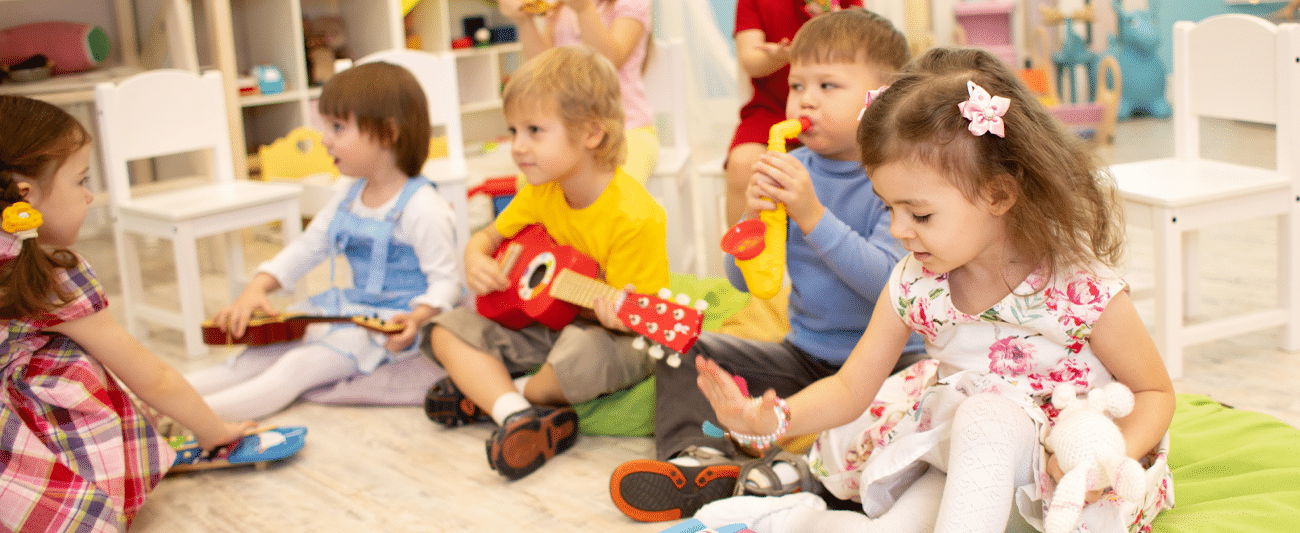
If you take a walk around any supermarket, it would not take you long to spot the toys, clothes and even foods targeted in a gender-specific way. Pink sparkly yoghurt pots, anyone? With gender neutral provision, we are creating a breathing space for children to think outside of this limiting imagery which can feel stifling and stereotypical. When we create gender neutral provision, it doesn’t mean that we ignore gender as a concept, but rather that we make the conscious decision to put together an environment where gender is not a limiting factor on the options available.
Here are some ways you can make your provision more gender neutral and encourage critical thinking about gender stereotypes in a gentle and age-appropriate way.
The role of staff
Think about yourself and the other staff who work within your setting. Next, think about the areas in which you typically play and interact with children, and the areas for which you show and voice preferences. Think about whether you use your interactions with children to model the use of diverse gender expectations. Do you notice any patterns which may have their roots in unconscious gender-bias?
What we say and how we say it
When talking with children, we need to be aware of whether we are using gendered language. While you might not hear ‘sweetheart’ or ‘darling’ in a classroom any more, you might still hear ‘buddy’ or ‘pal’. There isn’t anything inherently wrong with those words, but we need to think about whether we use those equally between all of the children in our care, or whether we tend to use them for one group in particular. When we greet children or initiate conversation, it can be really easy to use gendered language without realising it. Think about how many times you have welcomed a girl by commenting on how nice her hair looks or how much you like her new shoes, and then think about how many times you have said the same thing to a boy.
One easy way to make praise gender neutral is to make it behaviour specific, so you could say, ‘Wow! I love how carefully you poured that water for your friend. Your muscles were working hard holding that heavy jug,’ or ‘You did such a great job of matching the blocks to their shadows; the blocks area looks so tidy now and it is ready for the next person.’ Not only is this praise genuine and specific and encourages behaviour we want to see more of, it can also be used to challenge stereotypes. For example, praising girls for being strong and boys for being helpful can counter the messages they get elsewhere.
When and how should we challenge stereotypes?
Cultural ideas of gender intersect with race and community expectations and as people working with young children, we need to be mindful of the messages children may be receiving at home. If we need to intervene in a situation or a conversation where children are at risk of hearing hurtful or damaging words, we need to be creative and diplomatic in the ways we phrase our guidance so that it does not criticise what the child has learnt from home or in their community. Young children may be repeating phrases or opinions they have heard from their carers, and do not necessarily know that those words can be hurtful. Think of the example of swearing; we wouldn’t say, “That’s a bad word! Who taught you that? You can’t say that in school!” and instead we would say something like, “That isn’t a word we use at school. Try using this word instead…” . We can say the same about gender-specific messages. Rather than suggesting that parents or carers are ‘wrong’ we are simply explaining that home rules are different to school rules, and in school, boys can be hairdressers or play with dolls and girls can be footballers or drive diggers, even if the rules in their house are different.
By thinking carefully about the provision we offer, we can prevent some of these issues from arising in the first place and allowing children to explore roles and ideas without first needing to sidestep gender coding. For example, consider donating the princess dresses and cartoon character onesies from your dressing up box and instead provide fabrics in a variety of textures, colours and sizes. Any piece of fabric can become a dress or a cape (or a river or a hillside) but that’s for the child to decide – a piece of fabric does not dictate its purpose or ‘who it’s for’ in the same way a cartoon character dress or superhero outfit will.
One area where staff can gently challenge stereotypes or preconceived ideas is in the vocabulary used to describe job roles. Rather than ‘firemen’ refer to ‘firefighters’, refer to ‘police officers’ rather than use the gendered versions.
Domestic role play/ home area
When creating gender neutral provision, role play is an area where we have great opportunity to allow children to explore diverse ideas, roles and characters. Let’s think about domestic role play, or ‘the home corner’. By the time children come to school, they will already have some awareness of what are considered ‘boys things’ and which are ‘girls things’ (regardless of how many times their teachers say that ‘all colours are for everyone’). Some children will vocalise contempt or disgust for items which they deem to be not for them. The simple act of removing items which are colour-coded by gender can liberate children from feeling that they cannot play with certain items. For example, lots of boys have hands-on dads, uncles or other male carers they wish to emulate, but playing with a pink plastic pushchair and a pink plastic baby bottle might be a step too far. By choosing neural-coloured, authentic versions of those items, children more closely associate them with their own lives and will be more willing to play with them. Elsewhere in the home corner, having aprons, cookware and oven gloves in neural, realistic colours makes the kitchen feel more like a real house, where everyone is welcome to do the cooking.
Themed role play areas such as the bookshop, the flower shop, the bank or the supermarket are also a great way to challenge stereotypes. Make sure that any uniforms and props are gender neutral so that everyone can participate easily. Encourage children to try out different roles and show each other what to do as they train new ‘staff’.


Construction Area
Construction areas are typically very popular in most early years settings, which mean they are the perfect high-status area to challenge pre-conceived ideas about what happens within construction. Make sure any props and outfits are gender neutral and that staff have the necessary vocabulary to describe the roles. There’s a subtle but important difference between ‘foreman’ and ‘site manager’, for example.
Visual Stimuli and books
In each area of your provision, include visual stimuli which encourages children to see a diverse variety of people who might work in those roles. In your construction area, have books and photos of architects and engineers. In your kitchen area, have chefs, artisan food makers and families. If you have family members who work, ask them if they can a share a photo of them doing their job, and display it in the relevant area.
Having children be able to see people who look like them working in the careers linked to the various areas of the provision is a simple but very effective way to challenge children’s preconceived ideas of job and gender roles.
Final takeaway – why it matters
There are numerous studies which tell us that challenging gender stereotypes has both short term and long term benefits, within the classroom and within society. The potential impact of a few small changes should not be underestimated.
Research shows that even as early as six, girls have started to view certain jobs as being too tricky for girls, and they start to avoid associated toys or activities. If the adult women around them model taking pleasure in ‘tricky’ maths, show books and photos of female mathematicians, scientists and engineers, imagine the impact it could have on girls who think that these careers are beyond them.
Research has shown that the effect on boys is different, but equally worthy of note. Gender stereotyping and the resultant lower expectations mean that boys have lower reading skills, as well as struggling with mental health when they are older.
By making some small changes to our provision and our language, we can empower children to make their own choices about what a fair and equal world looks like, without being restricted by gender.
About the author

Sarah Starling
Sarah Starling is a writer and early years consultant with over 20 years’ experience in education, both in the UK and internationally. She is the creator of Box Phonics, a phonics scheme for international learners and home educators. Sarah splits her time between the UK and travelling internationally.










